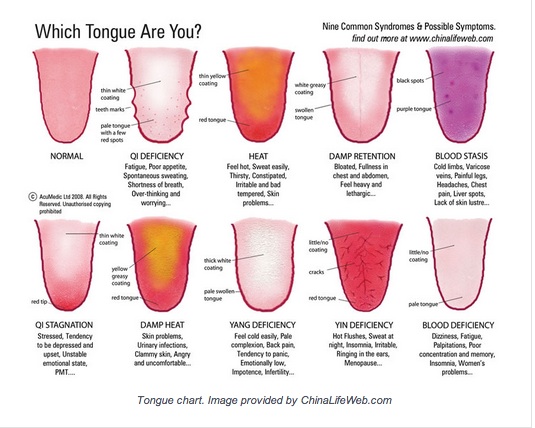|
In addition to the pulse, practitioners of Chinese Medicine also use the tongue to identify a diagnosis for a client. The tongue, like the pulse, is seen as reflecting all of the systems of the body. When we look at the tongue we consider several different aspects of what we see.
First we look at the overall color of the tongue. An ideal tongue is a healthy pink, not too pale or too red. Paleness indicates blood deficiency and redness indicates inflammation or heat. Dark patches or a purplish color indicates blood stasis. Next we look at the shape of the tongue. A healthy tongue should be an even thickness, not too puffy or too thin and have smooth edges. If the edges of the tongue are scalloped that indicates that the Spleen is not holding the tongue and the expanded tongue is pressing against the inside of the teeth creating the scallops. This is a strong sign of Spleen qi deficiency. The surface of the tongue is also important to consider. A healthy tongue has a smooth surface, without cracks, and a minimal amount of coat. If the surface of the tongue has cracks or figures that indicates a yin or fluid deficiency in the person. If the tongue has a thick yellow coat that indicates dampness in the person’s system. Considering all of these factors and the location on the tongue of these signs tells the practitioner what is going on in different systems of the body. Careful consideration of the tongue can reveal a good bit to the practitioner about the balance of the client. Using this perspective in conjunction with feeling the pulse helps reveal how acupuncture and herbs can be used to bring someone back into balance.
1 Comment
|
AuthorMark is a board certified and licensed acupuncturist Archives
March 2019
Categories |
Proudly powered by Weebly


 RSS Feed
RSS Feed